
eXtensions - Tuesday 30 September 2025
By Graham K. Rogers

A few days after the release of OS 26, Apple released minor updates (26.0.1) to cover security and minor fixes. I tried the new iPhones in Bangkok this weekend. Despite the price, I want the iPhone 17 Pro. The Journal app is now available on all OS versions. It is a useful alternative to Notes. With mirrorless cameras (and new lenses) available widely now, camera makers are beginning to end DSLR lines. Apple may invest in faded Intel. As Apple no longer uses Intel chips and bought their modem operation, one must ask, Why?
Apple released updates this week for its operating systems. I downloaded 26.0.1 versions of iOS, iPadOS and macOS early Tuesday morning followed by watchOS (26.0.2). I was relieved, after my recent experiences on the iPad Pro (and the fix) to see the download appear right away. On the Mac the update downloaded automatically while I was having breakfast and I was given the option of waiting for it to install overnight, or restarting right away.
The iOS update covered the usual bug fixes and security updates plus problems that some users had experienced with Wi-Fi and Bluetooth disconnections on the newest iPhones with the C1x chip. There was also a fix for connection issues to cellular networks that affected some users after updating to iOS 26. The iPad update also fixed a problem when the floating keyboard would unexpectedly change positions; and a problem with VoiceOver that was disabled for some users after the iPadOS 26 update. On the Mac, as well as the bug fixes and security updates, there was a fix for the problem that users of the Mac Studio with the M3 Ultra chip experienced when their devices would not update. The update for the Watch had no special fixes.
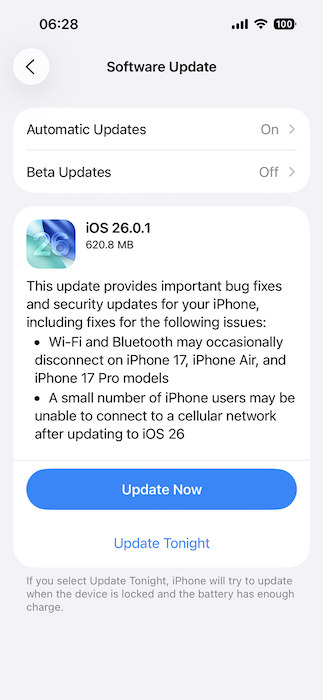
|
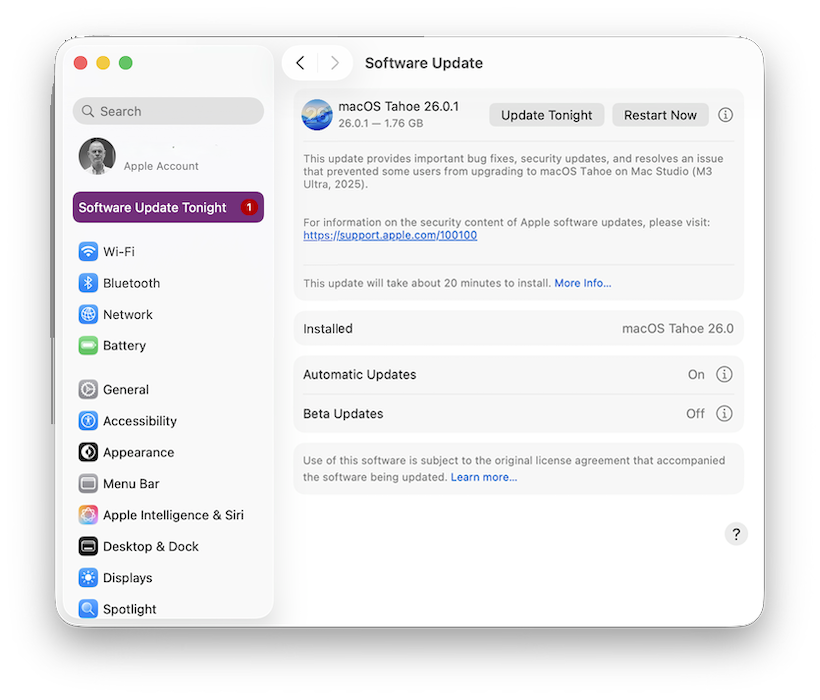
|
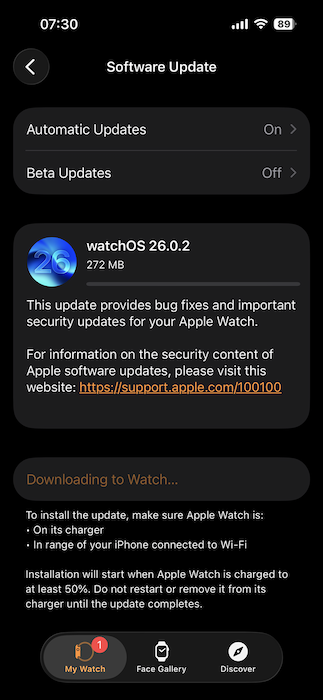
|

Apple is known for its secrecy and when I wrote about the company's products I had to sign non-disclsure agreements and keep to embargoes on a number of occasions. Any deviation on my part would probably have meant an end to the flow of test devices. That did end of course when I stopped writing the columns in a local newspaper. I am grateful for the chance to have seen these products at first hand (and early), and for the visits to America for product releases. When Apple sends a device for authorisation to the FCC in the USA it includes documentation that it expects to be kept secret. Lawrence Bonk (Engadget) reports that a PDF on the iPhone16e was accidentally released by the FCC and an investigation is under way.
I had my first look at the new iPhones this weekend when I went into the new iStudio (floor 1) of Siam Paragon. I was fairly impressed by the iPhone Air which felt dangerously thin in my hands. I had visions of dropping this if it were in my possession. My devices have a hard life. The iPhone 17 was nice enough, too, but the iPhone 17 Pro - I have used several releases of this - would be what I would choose when the time comes to buy, despite the artificially high prices here. I was already half sold anyway.
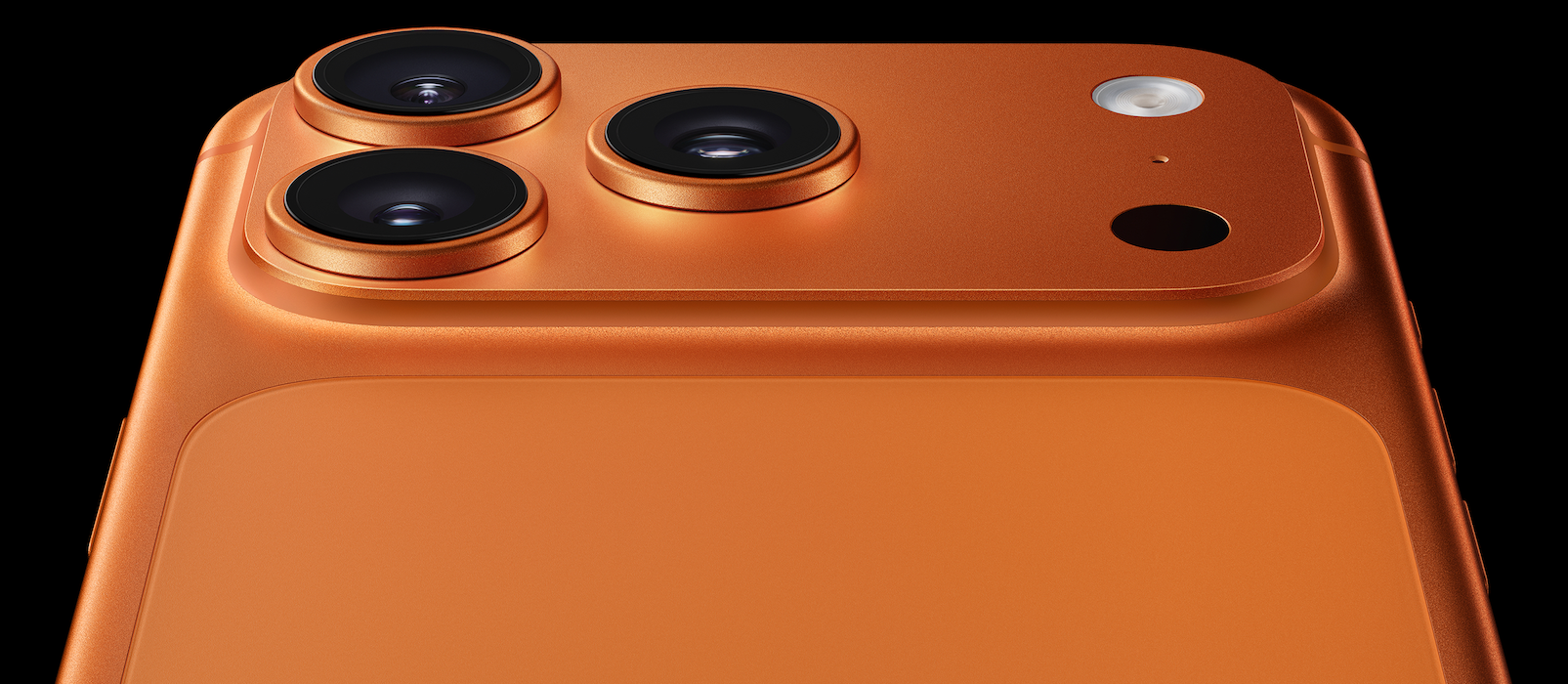
I have had my iPhone 15 Pro for around 2 years and it is ready to be replaced. It still works faultlessly although the battery needs to be replaced soon. I looked at a couple of apps that were installed, including the camera. Lenses available are .5, 2, 4 and 8. My iPhone 15 Pro has .5, 1.5, 2, and 4. The 8 was a major selling point for me as a telephoto lens, but I also tried an extreme closeup shot and was surprised how good the focus was, so this looks useful as a macro lens. Now all I have to do is find the cash.
I also tried the Journal app when I saw that this was now on the Mac. When it first came out on the iPhone, I had no intention of using it for writing a diary, so the persistent reminders irked me and I ignored the app. Now that it is available system-wide, I wondered if I could use it instead of Notes for some of the writing I do. I use Notes a lot as it synchronizes to all my Apple devices. That includes any odd comments or notes, including internet links, that I may want to think about and use later. One of my concerns is the ordering and archiving of earlier work. I will monitor how that works as I write more.
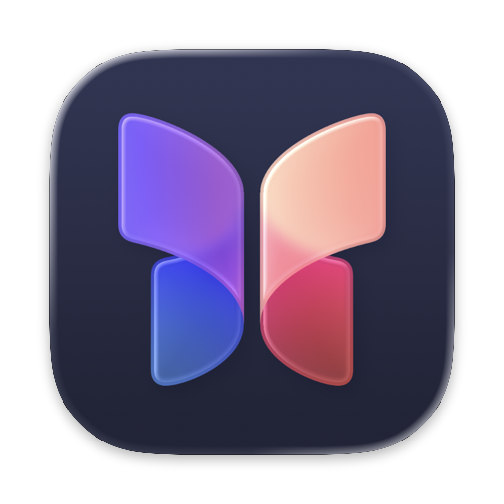 I started with Journal on the iPad Pro and the first thoughts, now merged with the rest of this paragraph, were easy enough to type. The entry took a bit of finding when I closed the panel, and to continue work, I had to press the Edit button. When I checked on the Mac - before I could see the entry I had made on the iPad - I had to turn on the iCloud synchronization (fair enough) and the text appeared within a few seconds. The interface is slightly different. I found the Edit command in a menu revealed by pressing a 3 dots (. . .) button. That is now on the iPad. All well and good. HTML markup text for é and € seem to be OK in the Journal pane and are OK in a browser when I tried later.
I started with Journal on the iPad Pro and the first thoughts, now merged with the rest of this paragraph, were easy enough to type. The entry took a bit of finding when I closed the panel, and to continue work, I had to press the Edit button. When I checked on the Mac - before I could see the entry I had made on the iPad - I had to turn on the iCloud synchronization (fair enough) and the text appeared within a few seconds. The interface is slightly different. I found the Edit command in a menu revealed by pressing a 3 dots (. . .) button. That is now on the iPad. All well and good. HTML markup text for é and € seem to be OK in the Journal pane and are OK in a browser when I tried later.
One advantage for me is that a word-count appears in a panel at the top although (with only one entry) I am unsure if this is for the specific page or all entries. It looks like "specific" which makes it useful for me. Another plus is that, on the Mac and the iPad Pro, I can make the panel full screen, then hide the side panel, leaving me a clean screen with minor distractions (formatting, files, fonts, and other tools). They are either hidden or (font control for example) minimized at the top, so become less intrusive. The font only gives bold, italic, underline and strikethrough, plus bullet options and I prefer to add these in markup anyway. A full screen is available in Notes on the iPad but this is not the same: narrow text area with unused space to the right and controls which are not so natural to use.
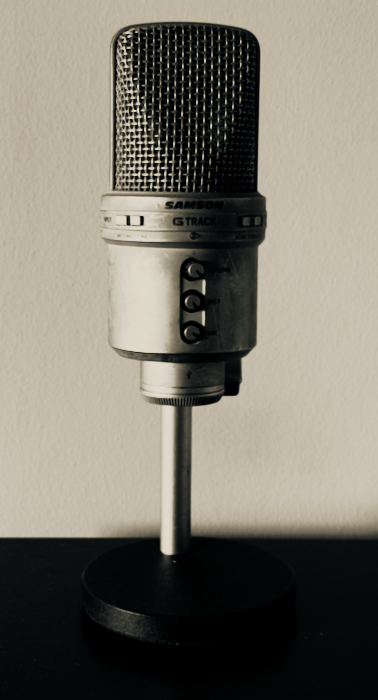 This week I also looked at the way dictation now works on the iPad. Some students are thinking of a project for transcribing audio content to make it more accessible for deaf students. It would use AI to differentiate between the different speakers. During the discussion with a colleague, she told me that she had recently transcribed a meeting using ChatGPT and found the output quite acceptable.
This week I also looked at the way dictation now works on the iPad. Some students are thinking of a project for transcribing audio content to make it more accessible for deaf students. It would use AI to differentiate between the different speakers. During the discussion with a colleague, she told me that she had recently transcribed a meeting using ChatGPT and found the output quite acceptable.
In discussing how the students might put this together, I recorded a couple of sentences of my output during the discussion, and found this much improved on earlier output. In the past it had taken more time to correct the errors than if I had typed it out myself: my normal approach. To test this a little further, I asked the colleague to dictate using Thai. I had to set the language first. She told me that (like my English output) her words had been recorded faithfully.
I have been a follower of Cillian Murphy since 28 Days Later. I see 28 Years Later has at last arrived in the Apple Movie store here and I have added that to my list. I was also intrigued by an early performance of his as a haunted detective in the science fiction movie, In Time (2011). The list of movies with Murphy that I would like to see would take me months to go through. He has been described as having eyes that "look cold enough to freeze water" which those who followed Peaky Blinders might confirm. And Oppenheimer.
Next week (3 October) a new movie, set in a school for those kids that appear to be hopeless - violent and antisocial - appears on Netflix. It is based on a book by Max Porter (Shy) and the screenplay shifted the focus from one of the boys, named Shy to the head teacher, Steve, played by Murphy. Peter Bradshaw (Guardian) reviews this positively. Steve has already appeared in my Reminder Set list on Netflix

Also on Netflix currently is an Irish Succession - House of Guinness - which has an enthusiastic review on the Guardian. Jack Seale writes that it "matures into a romp that you can hardly resist, especially when it makes such good use of its time and place." The review has several comments on James Norton who plays "the fearsome Sean Rafferty", an arch schemer whose currency is violence; and in an Instagram posting I saw about behind the scenes work, Norton also figures prominently. There are 8 episodes. I have just finished Episode 4 and I am enjoying this immensely. It is not just a drawing room drama. The factory figures prominently, and so does the countryside. As this is set in a time not long after the Irish Famine, it does not hold back on this either.
On AppleTV, the Savant was due to appear last week, but a few days before, Benjamin Mayo (9to5Mac) reported that it was cancelled. It was pulled from the lists and no longer has a release date. Andrew Orr (AppleInsider) also mentions this, noting that "the series remains on the service's slate but without a confirmed timeline". Speculation is that with recent events in the USA, the subject matter may be sensitive at this time. Martin Peers (Information - Paywall), picks up on comments made by Jessica Chastain, the star who thinks Apple ("after careful consideration") has made the wrong decision: delaying it because "the subject matter is too problematic right now". Peers also reminds us of the cancellation of John Stewart's show because of perceived problems.
Down Cemetary Road, with Emma Thompson and Ruth Wilson, based on a book by Mick Herron (who wrote the original books that Slow Horses is based on) will be on AppleTV 29 October. From the trailer (always a narrow focus) this looks interesting. Comments online are fairly positive and Emma Thompson is always a good bet.
The iPad Pro is my main computing device these days, although there are features I wish Apple would address, such as multiple accounts on the device (like the Mac). This would be particularly useful if I wanted to share one of the iPads with a friend or a student. I would not want them to have access to all my information. It also means another less-trusted user could change the password while using the device, and it could then be easily stolen. Another feature I would like is tethering: the ability to link a camera (DSLR or mirrorless) using a cable, and control the camera from the iPad. It is possible to do this on a Mac or PC, but the way some photographers work, the lighter iPad Pro makes more sense on the road.
I have been aware that Hasselblad can do this with its Phocus app and its digital Hasselblad cameras, so the feature may be available using an API. This is more likely to be a choice of the camera maker than Apple. That was pretty much confirmed in an article by Albrecht Voss (FStoppers) on the WiFi tethering now available for the X2D mirrorless camera through Phocus. In the article, Voss mentions that Canon, Leica, and Fujifilm also provide wireless tethering solutions, but the way Hasselblad has done this "makes it especially practical." There were a couple of software solutions for the Mac that worked with my Nikon DSLR, but these are no longer available (one did not have Thailand as a payment option).
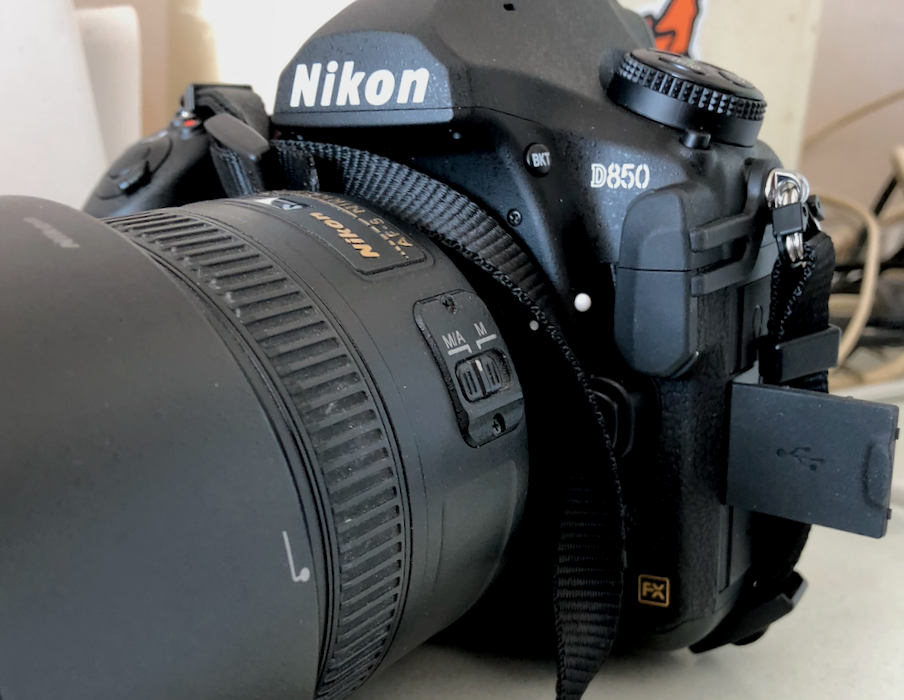
Although I favor the DSLR, I am aware that there has been considerable migration to the newer mirrorless cameras, some of which provide exceptional output. That Hasselblad has been on my wish list since it was announced with a 50MP sensor. The 100MP version only increased that desire. At some point I will have to move to mirrorless, although I have considered another D850 when the time comes (they are now half what I paid for mine). An indication of how the DSLR has reduced significance for many manufacturers is the availability of new lenses. Plenty of lenses are still available for DSLR cameras, but new designs and lens configurations are almost all for mirrorless cameras these days.
Another death knell for the DSLR came this week when Alex Cooke reported that after 35 years of production, Canon "has discontinued the Canon EOS-1D X Mark III." I considered a Canon D30 when I bought my first DSLR. I tried that and the Nikon D70. The latter immediately felt right. When I went to Apple product releases in San Francisco and elsewhere, I could always tell when a photographer was taking a picture with a Canon: the shutter sound was so quiet when compared to the Nikon. With the D850 there is a quiet mode, but the Canon whisper still wins. Cooke is more of a Canon fan than I am and his article runs through the history of the cameras: well worth reading.
I saw a report on MacRumors (Juli Clover) this week that suggested Apple was looking at an investment in Intel. Later, in a report on the same story by Dennis Sellers had the same thoughts I had just had: "It makes no sense . . . for Apple to invest in Intel." It is well known that since Apple made its move to Apple silicon, dropping the long relationship with Intel, the company has had problems on several fronts. Apple did buy its modem unit and the fruits of that were a long time coming. The C1 and now C1x chips have only recently arrived.
The US government has invested (9.9%) in Intel in a move that might be seen in other countries as socialist. Other companies have followed: NVidia and Softbank. With Tim Cook ingratiating himself with the White House, is this just a move to appease the current incumbent as Wesley Hilliard (AppleInsider) hints at. If so, is this really in the best interests of Apple? Hilliard does also make the point that this could allow Apple to provide Intel foundries for TSMC, thus helping its own chip production. Other commentators fail to see any real advantage for this investment. My question is Why?

Graham K. Rogers teaches at the Faculty of Engineering, Mahidol University in Thailand. He wrote in the Bangkok Post, Database supplement on IT subjects. For the last seven years of Database he wrote a column on Apple and Macs. After 3 years writing a column in the Life supplement, he is now no longer associated with the Bangkok Post. He can be followed on X (@extensions_th). The RSS feed for the articles is http://www.extensions.in.th/ext_link.xml - copy and paste into your feed reader. No AI was used in writing this item.

For further information, e-mail to
Back to
eXtensions
Back to
Home Page